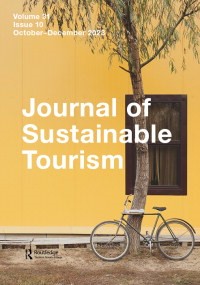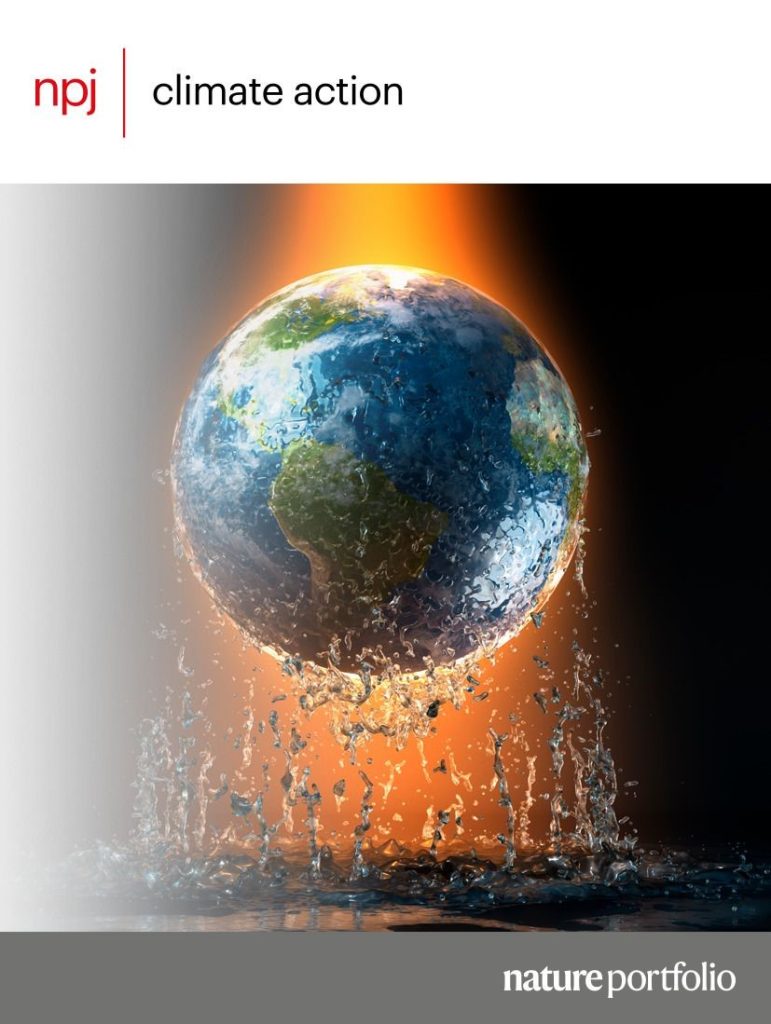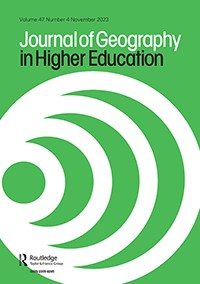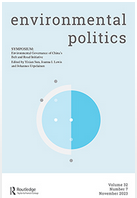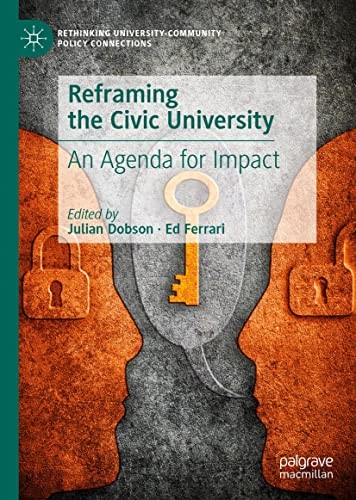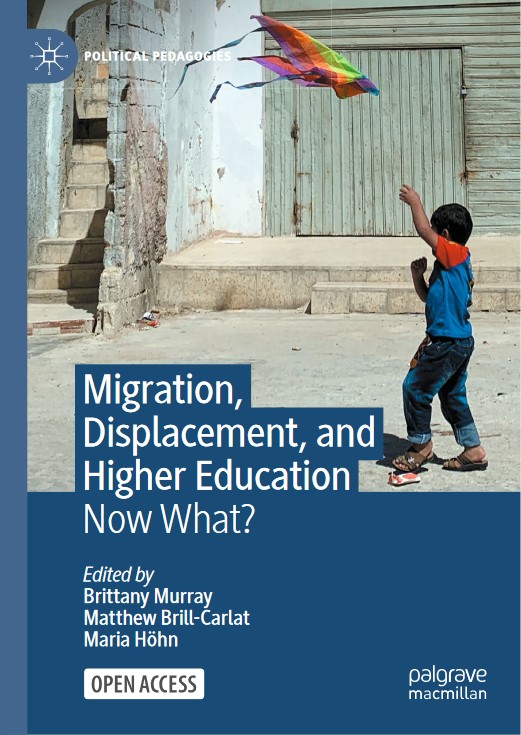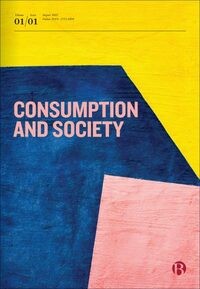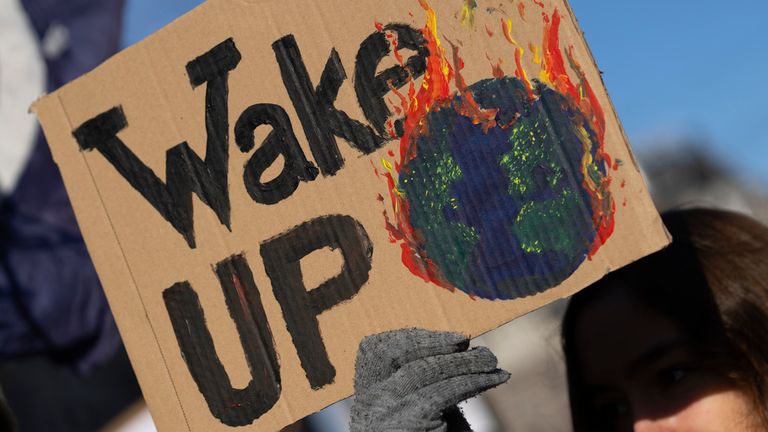
Here are synopses of some key academic writings, published in 2022 and 2023, relevant to the work of FlyingLess.
An interdisciplinary team of seven researchers investigate what role climate change concerns and norms play in the frequency of leisure air travel in Norway, “one of the countries of the world where people travel the most by air,” and what explains such travel. Using survey data from 2019 and 2020, involving 2,842 individuals, they find that the primary factor informing leisure flight frequency are “established habits and lifestyles.” These habits and lifestyles “reflect self-enhancement values (including valuing indulgence and stimulating experiences) together with urban residence and the perceived ‘normality’ of air travel.” Also significant is the perceived superiority of flying (in terms of speed, convenience, and the ease of organizing trips relative to other modes of travel). In other words, climate concerns and norms have a weak effect on such travel. For such reasons, the team sees “the need for interventions to limit the emissions from leisure air travel substantially and permanently.’ Such interventions might include “norm-directed interventions”—they invoke restriction on tobacco advertising as an example–that challenge “a lifestyle of unsustainable air travel.” Such interventions, they write, “should be combined with the facilitation of public debate on the issue, supporting the climate change mitigation norms that may be emerging.” They also endorse raising taxes to make air travel more expensive, and other, less energy-intensive modes more attractive. (See Marianne Aasen, John Thøgersen, Arild Vatn, Riley E. Dunlap, Dana R. Fisher, Ottar Hellevik, and Paul C. Stern, “The limited influence of climate norms on leisure air travel,” Journal of Sustainable Tourism 31, no. 10 [2023]: 2250-2269.)
As demonstrated by this blog post and others that we at FlyingLess have done over the years, there’s a lot of literature on the importance of reducing air travel in academia. What there is a lot less of are examples of what successful reductions look like. Four scholars seek to help remedy this by drawing on seven years of work with academic institutions to cut aviation emissions and lessons the authors have learned from a transdisciplinary project involving interviews at four academic institutions and surveys at eight—all of them in Germany. (See Susann Görlinger, Caroline Merrem, Maximilian Jungmann, and Nicole Aeschbach, “An evidence-based approach to accelerate flight reduction in academia,” npj Climate Action 2, no. 1, 2023: 41.) Given the need to achieve far-reaching reductions in emissions, many academic organizations have committed to net zero targets, the authors point out. However, “reducing a few flights, and relying on technology will not be enough,” they assert. “Instead, we need to rethink and redesign the scientific system, its values and culture, and the way scientists interact.” Such transformation, they find, requires a focus on reshaping both internal frameworks (within universities and research institutions) and external ones. Within academic institutions, there is a need for a clear delineation of responsibility for flight reduction, strong leadership and engagement, and consistent and sufficient support to enable far-reaching change. In terms of external frameworks that shape travel practices, the authors center the work of funding agencies; government (especially in relation to public universities and research institutions); ranking organizations (regarding the necessity of taking seriously institutional efforts to achieve emissions cuts and incorporating those achievement in their evaluations); and conference organizers/professional associations. To enable the transition to a low flying academia, the authors have put together an open-access toolbox. That toolbox is the subject of the blog post above this one.
The climate crisis and the heavy ecological impacts of academic fieldtrips involving long-distance travel have given rise to questions as to whether they are inherently unsustainable and, thus, whether they should continue. Andrew Telford, Andrew, Annemarie Valentine, and Steven Godby do not offer simple answers to these questions (“The paradox of the ‘sustainable fieldtrip’? Exploring the links between geography fieldtrips and environmental sustainability.” Journal of Geography in Higher Education [2023]: 1-18). Instead, their goal is to encourage critical reflection on such matters. The three geographers note that they “regularly engage with students about different types of pro-environmental behaviour.” Yet, only rarely have they “engaged with students about the environmental implications of field classes” that are commonplace within their discipline. The authors model such engagement via a study involving 48 “undergraduate geographers at an East Midlands university” in the United Kingdom; the study utilizes an initial survey, an online class, and semi-structured interviews. Interviewee testimonies, the authors find, “suggest that virtual fieldtrips are (and could prove to be) a valuable learning tool.” Testimonies also “suggest that a physical, in-person presence is equally as important”; this could entail the “on-site” presence of academic staff (with students connecting virtually) or advance “reconnaissance work” by staff. Ultimately, however, the authors champion “a fundamentally dual-dialogue approach,” not least for the pedagogical benefits it yields. As they effectively argue throughout, “the sustainability of geography fieldtrips (in lieu of their environmental impact and the global climate emergency) must be based on deliberative participation and collaboration between staff and students (and stakeholders in affected field environment).”
The notion that academics should reduce work-related air travel as a form of climate action has become increasingly popular in recent years. Authors Ryan Katz-Rosene (a founding editor of the “Flying Less in Academia Resource Guide”) and Anne Pasek thus reflect on what they call the Academic Flying Less Movement (AFLM), a movement in which they participate. In doing so, they address two questions: 1) does participation “in these types of small-scale, mostly voluntary, demand-side actions” produce significant results? and 2) how might the AFLM “scale up” within the academy and beyond to bring about meaningful changes in relation to climate change and the aviation sector? The two scholars find value in personal action (in the form of individuals opting to fly less), but not in and of itself; it is meaningful because those opting to reduce flying tend to be people of high socio-economic status and of “disproportionate climate influence.” Hence, the significance of individual actions lies in their potential to intersect “with other scales and forms of climate actions that can, in toto, be more materially significant.” In terms of the second question, the authors insist on the importance of working simultaneously on multiple scales—from the personal to the global—and moving back and forth between them, not least because each scale is dynamic and presents unique opportunities and limitations. For such reasons, the AFLM, in addition to continuing to work within the academy, “ought to seek partnerships with other sectors to influence aviation supply chains, agitate for change within domestic transport regulations and even more ambitious international agreements governing aviation’s climatic impact as part of a broader spectrum of climate related civic actions.” (See “Spiral-scaling climate action: lessons from and for the academic flying less movement,” Environmental Politics [2023]: 1-22.)
In the effort to reduce flying and associated emissions, “super short-haul flights” have received significant scrutiny. One reason is that emissions per passenger relative to distance traveled is typically greatest for the shortest flights. That train travel can sometimes easily substitute for these flights provides further justification. Following such reasoning, some European countries—Austria, Belgium, France, and the Netherlands—have taken various steps to either ban or discourage (via taxes) super short-haul flights. And more are considering doing so. However, as Frédéric Dobruszkes, Giulio Mattioli, and Laurette Mathieu point out (“Banning super short-haul flights: Environmental evidence or political turbulence?” Journal of Transport Geography 104 [2022]: 103457) “climate change is the consequence of absolute GHG emissions and not of flight efficiency.” As such, the authors, by examining 31 European countries, explore whether it is prudent to focus on super short-haul flights–those of less than 500 kilometers–as part of the overall fight to reduce aviation emissions. They find that, while it might make sense to target super short-haul flights as “low-hanging fruit,” the actual emissions impact is small: such flights comprise 27.9% of departures from airports in the 31 countries, but only 5.9% of jet fuel consumption. This is why they suggest that a focus on super short-haul flights risks exaggerating their, while effectively obscuring (or delaying the addressing of) the much greater impacts of longer flights. It is these longer flights—and the forces that drive them—they assert, that “ought to be the primary target for action.”
Universities produce large amounts of greenhouse gas (GHG) emissions. At the same time, many institutions of higher education see and present themselves as leaders of sorts in responding to the climate crisis. However, as Kirstie O’Neill of Cardiff University observes, there is typically a disconnect between the discourse of universities—not least because of their neoliberalized nature–and their incremental approaches to cutting GHG emissions that they generate (directly or indirectly). Given the breadth and depth of the climate (and broader ecological) crisis, “more radical change is required,” O’Neill contends, “than is currently envisaged.” To this end, the geographer examines three areas of university activity that have potential for contributing to substantive change. Those areas are teaching, campus buildings, and university-related travel (particularly by air). Teaching commensurate with the demands of the climate crisis require challenging norms deeply held by students, O’Neill contends, norms related to neoliberalism, economic growth, and techno-optimism. Regarding buildings, O’Neill advocates a fundamental rethinking of what constitutes a “good university” so that the built environment reflects place-based sensitivities, while fostering socially and ecologically just connections with areas of socio-economic disadvantage. As for travel, far-reaching introspection within institutions is needed to challenge the “climate hypocrisy” and the “dirty little secret of academic life” that universities’ heavy reliance on flying reflect. O’Neill offers concrete ideas on all three fronts to help the reader think about what such transformations might look like. (See “Can Universities Be Climate Change Leaders?” In Julian Dobson and Ed Ferrari [eds.], Reframing the Civic University: An Agenda for Impact, Cham, Switzerland: Springer International Publishing, 2023: 63-81.)
In light of the significant impact of aviation on the climate, the European Union is exploring ways to decarbonize air travel. In consideration of such efforts, a team of seven scholars based in Germany and Switzerland examines the two main technology options for cutting emissions: CO2 removal and synthetic, electricity-based fuels. (Romain Sacchi, Viola Becattini, Paolo Gabrielli, Brian Cox, Alois Dirnaichner, Christian Bauer, and Marco Mazzotti. “How to make climate-neutral aviation fly.” Nature Communications 14, no. 1 [2023]: 3989.) Carbon dioxide removal, the authors explain, takes place via Direct Air Capture and permanent geological storage of CO2. Synthetic jet fuel is a product of CO2 captured from the air and hydrogen synthesized through water electrolysis. The team finds that, if growth in aviation is sustained, mitigating its climate impacts during this century via CO2 removal and synthetic fuels will require “significant amounts of energy, natural and financial resources.” In the case of (decarbonized) electricity use required annually to achieve carbon neutrality during the period of 2050-2010, for instance, it would necessitate 1.3 times the present yearly electricity output of the European Union’s 28 member-states. Regarding freshwater consumption needed annually between 2018 and 2100, it would almost equal the current levels of consumption of the EU-28. For such reasons, the authors advocate reducing demand for air travel in the short and medium terms. This would “[give] society time to develop other, possibly longer-term, sustainable solutions.”
Four of the organizers of the Fourth International Feminist Geography Conference share their experiences and reflections for would-be first-time organizers of a hybrid gathering. The conference took place in June 2022, in three in-person locations: Boulder, Colorado (USA); Kandbari (India); and Durham (United Kingdom). It also involved virtual participation across many different time zones. About 500 individuals registered for the conference, with 300 of them participating in the live event (two-thirds of them virtually) and with many of the others engaging recorded papers and sessions before and after the gathering. The feminist geographer authors—all of whom were new to hybrid-conference organizing—find that the gathering was an “enormous success,” not only because of the high level of participation (which was far greater than previous conferences), but also in terms of inclusiveness. The bulk of the article focuses on four themes that offer valuable lessons for anyone thinking about organizing an international hybrid conference. They are: (1) budget and funding; (2) technology, equipment, and hybrid format; (3) advertising, networking and keynote speakers; and (4) organization and timelines. In the end, the authors emphasize that organizing such a conference is an “exceptionally labor-intensive” endeavor. They thus stress the importance of “planning ahead, planning early, and strategizing about how to allocate time and labor throughout all stages of preparation.” This requires “thinking carefully about organizing committee makeup, structure, and task designation.” (See Hanieh Molana, Deirdre Conlon, Jennifer L. Fluri & Nancy Hiemstra (2023) Conference Organizing in the Hybrid Age: Lessons from the Fourth International Feminist Geography Conference, The Professional Geographer, DOI: 10.1080/00330124.2023.2258395)
In an open access volume on pedagogy in relation to refugees and displaced persons, geographer Joseph Nevins considers long-distance travel courses that study these matters. (“On the Pedagogical Value of Not Going There: Mobility, Fossil Fuel Consumption, and the Production of Refugees,” in Brittany Murray, Matthew Brill-Carlat, and Maria Höhn [eds.], Migration, Displacement, and Higher Education: Now What? Cham: Springer International Publishing, 2023: 173-182.) Via a focus on the ties between climate change, fossil fuel consumption, and associated inequities, he argues that such courses contribute to some of the very factors that underlie “forced” and illegalized human movement across international borders. In other words, he asserts that the very exercise of fossil-fuel-dependent mobility and the associated CO2 emissions that travel courses entail harm people and places, particularly the already vulnerable, thus helping to produce a world of people in need of refuge outside of their home areas. In the end, he suggests that the conscious exercise of immobility on the part of students and faculty concerned with forced migration can enrich the learning experience for all by illuminating such connections. It can also aid the fight against intensifying climate breakdown by challenging socio-ecological inequities and excessive consumption among the globally affluent, and thus make forced migration and refugees less common.
As with land transport, fuel consumption associated with air travel has grown over the last couple of decades and shows no signs of abating. Frequent flyers are responsible for an increasing share of the emissions from air travel. The question is, what drives the ways of the “hyper-aero-mobile”? Noel Cass, a Research Fellow in Energy Demand Behaviour at the University of Leeds, addresses this, in part via an overview of relevant academic literature. (“Hyper-aeromobility: the drivers and dynamics of frequent flying,” Consumption and Society, Vol. 1, Issue 2, 2022: 313–335.) He determines that the key factors “are not individual and psychological, but structural, social and cultural.” In terms of the latter, they include the availability and proximity of airport infrastructure, changing social norms (e.g., “conference culture” or the notion that long-distance travel and individual well-being are tied), and a growing population of individuals whose social networks are geographically extensive. Findings from 30 semi-structured interviews with members of “high-energy-consuming households” in England support this assessment. With only a “decade left to pursue a habitable planet,” Cass thus concludes that “the only strategy for flight demand reduction which is likely to be successful” requires “targeting first the hyper-aeromobility of the rich,” one reason being that broad societal “norms descend from the desirability of elite lifestyles.” Limiting the jet-setting ways of the rich necessitates working to shrink, not expand, airports, and decreasing aviation routes and the number of flights. This task, Cass writes, “is likely to require stronger government actions than are being considered, including but not limited to frequent flyer levies, taxing of air fuel, and/or more coercive measures such as the rationing of flights.”
Each year, the Society for Neuroscience (SfN) has an annual meeting. It is a large affair: in 2018, it took place in San Diego, involving 28,691 registrants and 12,761 presenters. In their open-access article (“Recommendations emerging from carbon emissions estimations of the Society for Neuroscience annual meeting.” eNeuro 10, no. 10 [2023]), Caroline Kay, Rob Kuper, and Elizabeth A. Becker used the presenters, 92% of whom traveled by air, as a proxy for the larger group to calculate their travel emissions based on their city of origin. Those emissions total 69,593 metric tons of carbon dioxide equivalents–in other words, they reflect radiative forcing–or 38,010.85 metric tons in terms of carbon dioxide alone. When emissions associated with the meeting venue and hotel accommodations are added to those associated with travel, the former make up less than 5% of the total, the authors find. The authors then consider alternative meeting formats with an eye toward greatly reducing emissions and ensuring equity. In this regard, the authors conclude that a multi-hub format, with hubs spread across the globe, and a fully virtual format are not only the most ecologically sustainable models, but also the most inclusive ones.
.

